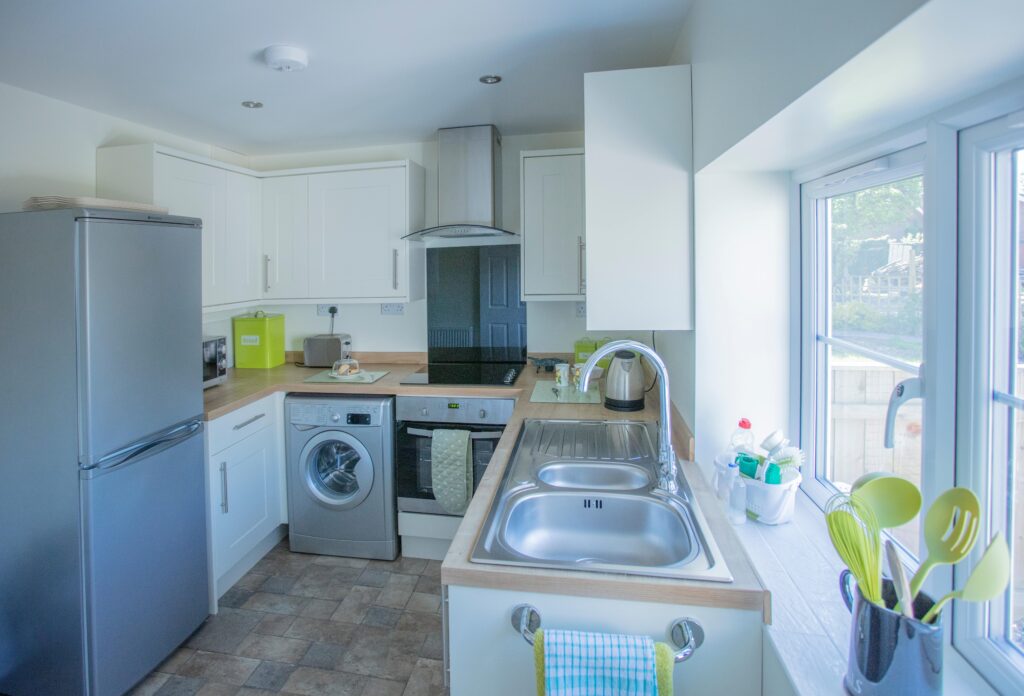When renting a home, understanding the expected lifespan of fixtures and fittings is crucial for both tenants and landlords. These components experience wear and tear over time and their longevity can vary significantly based on several factors. In this blog, we will explore the expected lifespans of various fixtures and fittings in a rented home, drawing on guidelines from the Tenancy Deposit Scheme (TDS) in association with the National Residential Landlords Association (NRLA).

Carpets and Floor Coverings
Carpets
The lifespan of carpets can vary greatly depending on their quality and the area they cover:
- Low quality: 2 to 4 years
- Medium quality: 5 to 8 years
- Top quality: 8 to 15 years
Natural fibre carpets like jute, seagrass, sisal and coir typically last up to 8 years. It’s important to note that heavy traffic areas, such as stairs and hallways, may experience more rapid wear. For example, a medium-quality carpet in a hallway might last on the lower end of its expected lifespan.
Laminate and Vinyl Flooring
Laminate and vinyl flooring generally have a lifespan of 5 to 10 years. These materials are more resistant to wear than carpets, making them a popular choice for areas with high foot traffic.
Hardwood Flooring
Hardwood flooring is a durable option, with an expected lifespan ranging from 15 to 50 years. Its longevity makes it a valuable investment, although it may require refinishing to maintain its appearance over time.
Decoration
Paint and Wall Coverings
The expected lifespan of interior decoration, including paint and wall coverings, is typically 3 to 5 years. This estimate assumes an average-sized property with normal use. Higher footfall areas and properties with more occupants may require more frequent redecorations. For example, walls in a busy hallway are likely to need repainting more often than those in a rarely used guest bedroom.
Household Appliances
Washing Machines
- Low quality: 2 to 5 years
- Medium quality: 6 to 8 years
- High quality: 9 to 12 years
Dishwashers
- Low quality: Up to 5 years
- Medium quality: Up to 10 years
- High quality: Up to 15 years
Ovens, Cookers, and Hobs
These kitchen appliances typically last between 9 and 15 years, depending on their quality and usage.
Household Goods
Mattresses
Mattresses have an expected lifespan of up to 8 years. This can vary depending on the quality of the mattress and how frequently it is used.
Curtains
- Low quality: Up to 5 years
- Medium quality: Up to 10 years
- High quality: Up to 20 years
Blinds
- Low quality: Up to 3 years
- Medium quality: Up to 8 years
- High quality: Up to 15 years
Factors Affecting Lifespans
Several factors influence the lifespan of fixtures and fittings in a rented property. Adjudicators consider these factors when determining responsibility for wear and tear versus actual damage:
Length of Tenancy
Longer tenancies naturally lead to more wear and tear. For example, a carpet in a property occupied for several years will show more signs of use than one in a short-term rental.
Number and Age of Occupants
Properties with more occupants, particularly families with children, tend to experience more wear. High-traffic areas, such as living rooms and kitchens, are especially affected.
Quality and Condition
The initial quality of fixtures and fittings plays a significant role. High-quality items are expected to last longer and withstand more wear. Conversely, low-quality items may need replacement sooner.
Wear and Tear vs. Actual Damage
Normal wear and tear, such as light marks on a carpet, is different from actual damage like burns or stains caused by negligence. Landlords and tenants must distinguish between these when assessing responsibility for repairs or replacements.
Property Type and Construction
Newer builds may not be as robust as older properties. Thin walls and partitions in modern constructions might require more frequent redecorations, especially in high-traffic areas.
Adjudicator Considerations
When disputes arise regarding the condition of fixtures and fittings, adjudicators review check-in and check-out reports, condition statements and any supporting evidence like photographs or videos. They aim to make fair decisions based on the presented evidence, considering the item’s age, cost and quality.
For instance, if a carpet originally costing £500 is damaged after two years, and its average lifespan is five years, the residual value and reasonable apportionment for the tenant’s cost would be calculated based on its remaining useful life.
Understanding the expected lifespans of fixtures and fittings can help both landlords and tenants manage their properties more effectively. By considering factors such as quality, usage and maintenance, you can ensure a fair assessment of wear and tear versus damage.
If you have any questions about maintaining your rented property or need assistance with property management, contact Belvoir Tunbridge Wells today. Our experienced team is here to help you every step of the way.










